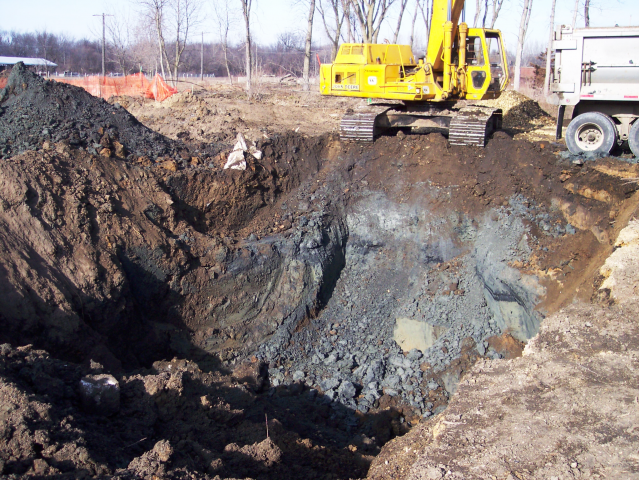4 key benefits of brownfield redevelopment
An abandoned and underused brownfield is often an eyesore to the surrounding community. Additionally, brownfield sites present potential health and safety risks to community members. After redevelopment, though, the same contaminated site can enable sustainable land reuse and development, revitalize the local economy and transform the entire community. When pursuing brownfield site remediation, municipalities should possess a clear understanding of the benefits of brownfield redevelopment. Additionally, community leaders will need to leverage professional expertise to complete these projects successfully.
Community benefits of brownfield redevelopment
A sustainable brownfield redevelopment addresses community concerns while considering site assets and limitations, neighborhood features and market demand. Site reuse goals align with the local economic, social, infrastructure and environmental conditions to help the surrounding community realize some of the following key benefits of brownfield remediation.
Environmental benefits
Protecting public health by cleaning up a contaminated site is one of the foremost benefits of brownfield redevelopment. Industrial brownfield sites have often introduced contaminants such as solvents, heavy metals, polychlorinated biphenyls, lead-based paint, petroleum and asbestos into the environment. Such contaminants have been linked to increased risks of cancer, lung disease and early death. Environmental cleanup of brownfields can remediate the contaminated soil and water and improve the natural environment and public health.
Brownfield redevelopment in urban infill locations reduces the need for additional greenfield development. The preservation of undeveloped, vegetated land is one of the critical ecological benefits of brownfield redevelopment. A study conducted by the EPA reveals that each redeveloped brownfield acre of land saves around 1.3 to 4.6 acres of land from new impervious surface expansion. As a result, brownfield redevelopment can help contain site stormwater runoff and prevent the spread of contaminants.Energy benefits
As brownfields are often found in densely developed metropolitan areas, redeveloping these sites can minimize transportation-related emissions and energy consumption. Infill development incentivizes housing density and public transit, thereby reducing vehicle miles traveled. Compared to conventional greenfield development, brownfield redevelopment reduces per capita vehicle miles traveled (VMT) by an estimated 32-57%. A reduction in VMT translates to decreased greenhouse gas and carbon dioxide emissions.
Electricity distribution in dense urban areas is more efficient than in sparsely populated suburban areas. This results in nearly 25% energy savings in a redeveloped brownfield site when compared to greenfield development.
Economic benefits
Community economic gains may be the most measurable benefits of brownfield redevelopment. Remediated brownfields attract businesses and lead to job creation, retention and increased private investments. The EPA estimates redeveloped brownfields supported 11-13% of job and housing growth between 2013 and 2030.
Public investments into brownfields offset the costs and liabilities of redeveloping them. Consequently, these sites become viable for private developers while improving property valuation. A 2017 study on the value of brownfield remediation concluded a 5 to 15.2% increase in residential property values within 1.29 miles of the sites.Fiscal benefits
An increase in property valuation in and around a redeveloped brownfield site offers additional tax revenue for local governments. Brownfields with established infrastructure can help save costs during the redevelopment. Increased infrastructure use, along with new commercial, residential and recreational opportunities in the area improves state income tax and sales tax revenue. The federal tax incentives for the assessment, cleanup and redevelopment further encourage municipalities to undertake such projects.
Although communities can discover significant economic and environmental advantages from brownfield redevelopment, investments in redevelopment projects can be slow due to financial costs, time constraints and the legalities that accompany a site's preparation for redevelopment. To successfully complete redevelopment projects and to realize brownfield reuse merits, municipalities should seek guidance from industry professionals.
How municipalities experience brownfield redevelopment benefits
A brownfield redevelopment project involves several steps, inventory and prioritization, including environmental site assessments, remediation planning, grant application preparation, cleanup programs, community outreach and engagement. Brownfield redevelopment professionals can develop efficient and cost-effective strategies to help municipalities successfully carry out redevelopment projects.
Environmental consultants team helps City of Rockford realize brownfield redevelopment benefits
A multidisciplinary team of Fehr Graham experts was instrumental in redeveloping the vacant Amerock building into a hotel and convention center in downtown Rockford, Illinois. From conducting environmental site assessments to completing the site design and providing construction staking for the project, Fehr Graham helped the City of Rockford and developer Gorman & Company complete a successful brownfield redevelopment project. The hotel has not only improved the downtown landscape but boosted the local economy by creating jobs and satisfying tax credit investors.
It is a municipality's responsibility to explore redeveloping an abandoned site. However, a brownfield redevelopment project is not a one-person job. Brownfield redevelopment requires the active participation of the public, along with private investors, third-party engineers and environmental consultants to achieve the benefits that will strengthen the entire community.
At Fehr Graham, we are committed to improving community health and vitality through brownfield site redevelopment. Contact Us to learn how our services can help your community realize the benefits of brownfield redevelopment, or give us a call at or give us a call at 815.394.4700.
Collaborative, Insightful, Results-Driven Solutions
Fehr Graham provides innovative engineering and environmental solutions to help improve the lives and communities of our customers.


